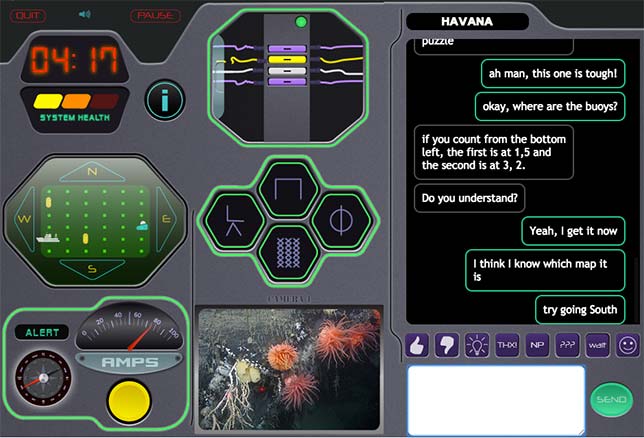Non-Profit Seeks Classrooms for Gaming Pilot
- By Dian Schaffhauser
- 09/13/17

Non-profit education research group LRNG-GlassLab is seeking teachers in grades 5-11 interested in trying a follow-up to GlassLab's collaboration game, Deep Sea Crisis, as part of research project. The organization is a small game design group that develops education programs to help push 21st century skills in an engaging way.
Deep Sea Crisis uses gaming to entice students to work together in solving puzzles in a simulated undersea research vessel. Two players are put in charge of their own submarine, and their goal is to keep it from sinking into the depths of the ocean. While one player studies the control manual and gives instructions, the other player works the controls. The goal: to disarm all the emergency alarms before the timer expires to save the ship and keep it moving. Challenges can be set up to run for one to three 45-minute sessions. All the resources related to that game are available online with free registration.
Now, GlassLab is wrapping up development of a more difficult collaboration game, Crisis in Space!, based on the feedback it has already received from users of the sea game. The new one, which lasts about 40 minutes per session, is intended to be played by upper middle grade and high school students. The organization is seeking teachers who want to act as test pilots for the new game. Participating classrooms can learn and be part of the game development process and chat via video directly with the development team to provide feedback. To play, students will each require a computer with internet access.
The initiative is being funded by a grant from the Hewlett Foundation.
About the Author
Dian Schaffhauser is a former senior contributing editor for 1105 Media's education publications THE Journal, Campus Technology and Spaces4Learning.